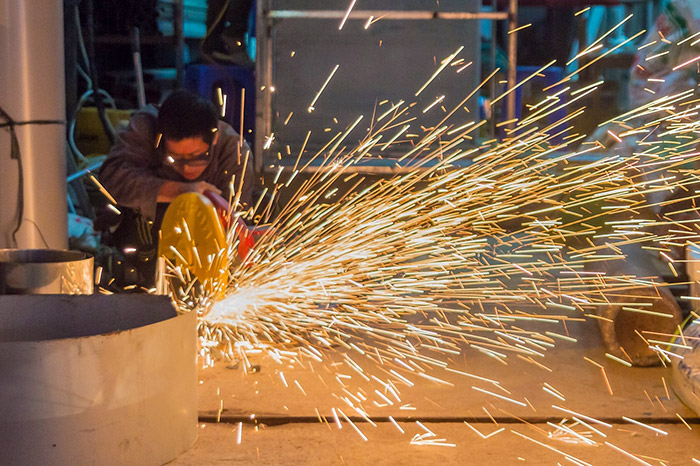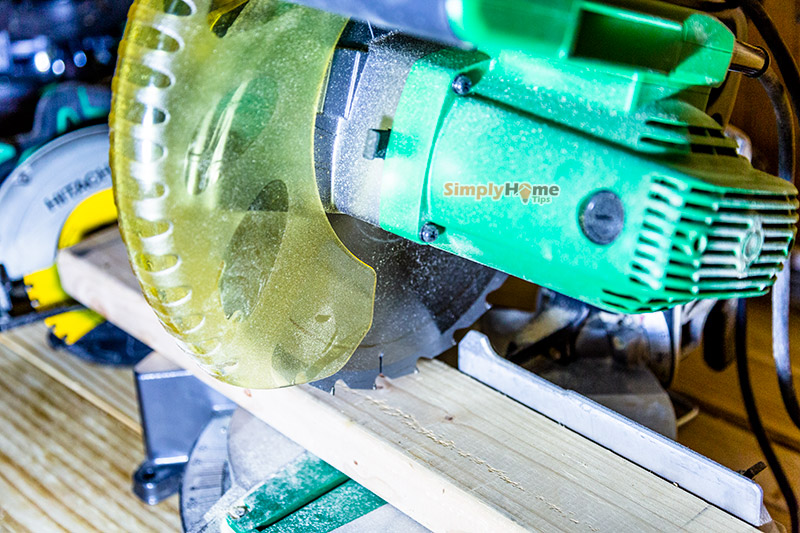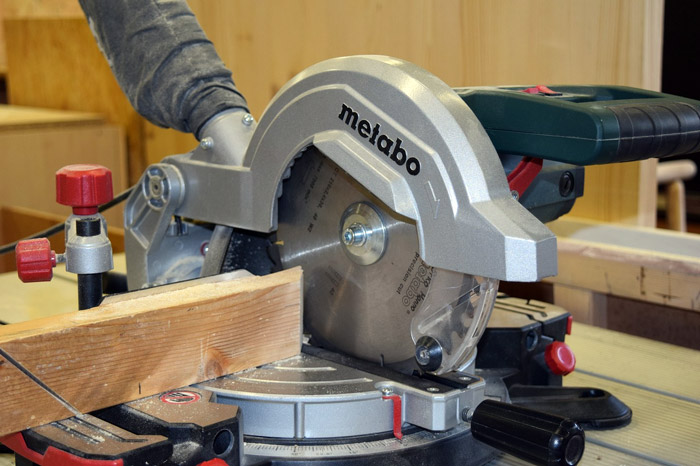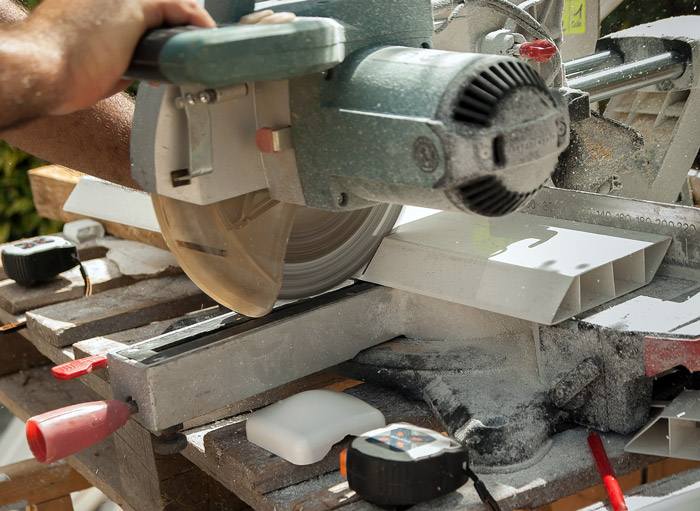If you have been considering doing some work around the house, chances are you are somewhat familiar with a chop saw or a miter saw. Although both saws complete essentially the same tasks, there are differences. Let’s take a look at the two saws, so you can make the best choice for the specific project you have to complete.
How Is A Chop Saw Like A Miter Saw?
Chop saws and miter saws do have several similarities. First of all, both have circular blades that rotate at high speeds, and both cut from top to bottom as the blade is pushed down onto the material.
Also, both saws have a stationary base with a hinged arm, which is fairly easy to operate, even for the beginner. Finally, as with any powered tools, safety practices are a must with either saw.
How Is A Chop Saw Different Than A Miter Saw?
Even though chop saws and miter saws are similar in appearance, chop saws are larger overall, with a bigger motor which allows more power and cutting capacity. Chop saw blades are typically 14 inch. A chop saw is more efficient for heavy materials, and can cut through most anything.
When using a chop saw, you are limited to straight 90 degree cuts only, as the saw blade can only be moved up and down.

On the other hand, miter saws, which typically have a 10 or 12 inch blade, can make 90 degree cuts, but can also be adjusted to make angled cuts, or bevel cuts with some models. The finer blades of a miter saw give more precise cuts, and produce neater results when cutting materials like framing or molding.

Homeowners with general woodwork projects find that the miter saw is more all purpose, as it can still be used to do the job of a chop saw on light materials. Miter saws are also somewhat safer to use, with more stability than a chop saw. Built in blade guards and dust bags are additional features common with miter saws.
The most difference between a chop saw and a miter saw
Chop saw
![]()
- Larger than miter saw
- Have more power and cutting capacity
- Most often used commercially
- More efficient for heavy-duty material
- Move straight up and down and cut 90 degree angles only
- Typically have a 14 inch blade
- Have a bigger motor
- Cut through most any material
- Used by welders, fabricators, and contractors
Use A Chop Saw For These Materials:
- Steel
- Concrete
- Rafters
- Joists
- Studs
- Trusses
- Brick
Miter Saw
![]()
- Produce neater cuts with finer blades
- More appropriate for general woodwork projects
- More precise
- Work well on small materials like framing or molding
- Miter saws can be adjusted to make angled cuts
- Make bevel cuts
- Typically available with a 10 or 12 inch blade
- Most often used by homeowners
- Used as a light chop saw, but chop saws cannot be miter saws
- Safer to use, more stable, with built in guards and dust bags
Use A Miter Saw For These Materials:
- Framing
- Molding
- Trim
- Baseboards
- Chair rails
- Hardwood flooring
- Light metals such as aluminum
- Plastic
Which Saw Do I Need?
You will need a chop saw if you are going to be cutting through heavy material like steel. Also, if your project is a large one, such as the construction of a building, a chop saw would be best.
You need a miter saw for the majority of tasks around the house. If you are just fixing up a few things with no thick materials to cut, and precise cuts are a priority, a miter saw is your best choice.

Safety Issues
Now that you have chosen the saw that best meets the needs of your project, it is time to talk about safety. Both chop saws and miter saws can be hazardous if not used correctly. Be sure to become familiar with and follow the safety tips below.
- Inspect power cords prior to use and never use if cut or damaged
- Make sure blades are the correct ones for your saw and match blade to the job
- Install blades properly and never use if damaged or dull
- Make sure saw is secure and use safety clamps as needed
- Use a firm grip on saw handle while in use and use saw guards as intended
- Wear appropriate safety equipment such as goggles or a face mask
- Do not wear loose clothing that could get caught by a blade
More Information on Miter Saws
If a miter saw is your choice of saw for your needs, things can still seem a little complicated as you realize there are actually different types of miter saws. So, we will take a look at the types of miter saws and some information about each one. All saws listed can crosscut and miter.
Types of Miter Saws
1. Basic Miter Saw
- No tilt for bevel cuts
- Relatively inexpensive
- Lightweight
2. Compound Miter Saw
- Tilts to make bevel cuts
- Some models only tilt to one side, dual compound models will tilt to both
3. Sliding Compound Miter Saw
- Tilts to one side for bevel cuts
- Slides for increased cutting capacity
4. Double Bevel Sliding Compound Miter Saw
- Tilts both ways for bevel cuts
- Slides
5. Cordless Sliding Compound Miter Saw
- Tilts to one side for bevel cuts
- Slides
- Runs on battery power

In addition, miter saw users may want to think about getting a bench or a stand to make the miter saw even easier and safer to use. Also, be aware that some miter saw models have laser guides that allow precise cutting, and LED features that illuminate the work space, making it easier to see.
Cost
Everyone knows that when you are considering a purchase, it is easy to be wowed by awesome features and to be excited about the possibilities of owning the new product. However, for most of us, final decisions are influenced by cost, so we will end by taking a look at a general guideline of what to expect if you are purchasing a chop saw or a miter saw. Also, keep in mind, chop saws and miter saws can often be rented if you are not looking for long term use.
The smallest, most basic, least powerful chop saw or miter saw can be picked up for around 50 dollars. Obviously, the more you want increased size, power, and features, the more you will pay.
The most expensive chop saws and miter saws can cost well over a thousand dollars. Blades will wear out and be an added expense regardless of the type of saw, and blades can run from 10 dollars to over 100 dollars.
Congratulations on choosing the saw that works for you. Having the right tool for any project makes the process more enjoyable, and the final product something to be proud of. Enjoy your next project!
Leave a Reply